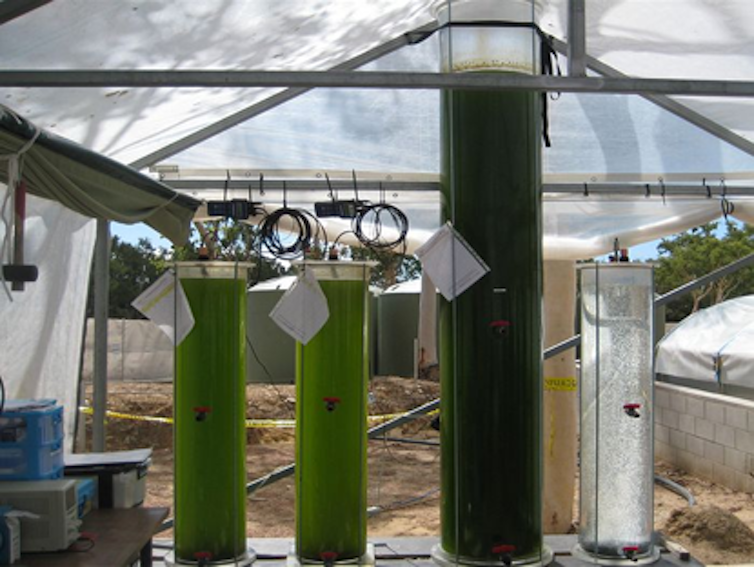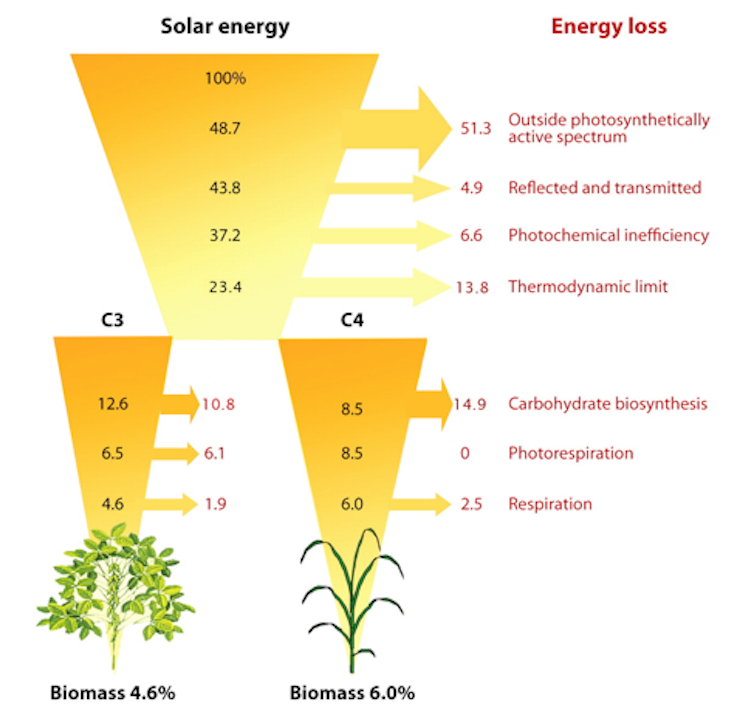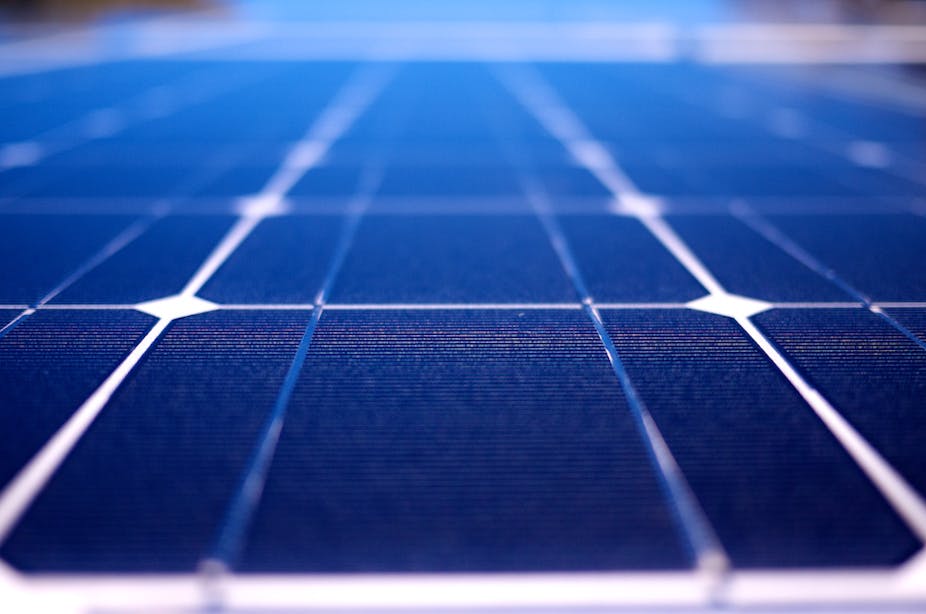About 80% of the world’s total energy consumption is derived from fossil fuels, with only 12.5% from renewable resources. Replacing fossil fuels with renewable energy sources derived from sunlight - such as photovoltaic solar panels, wind or biomass - is very challenging because these energy sources have a lower energy density and are generally more expensive. So if you want to maximise the efficiency of converting solar energy to renewable energy, what should you choose: solar panels or biofuels?
Energy conversion efficiency of solar panels
The total power from sunlight reaching the earth’s surface is about 101,000 terawatts (~2,500,000 EJ). However, solar energy is geographically diffuse - some places are sunnier than others. This makes it important to efficiently convert sunlight, capturing its energy in useful forms.
The maximum conversion efficiency [theoretically possible](http://en.wikipedia.org/wiki/Carnot’s_theorem_(thermodynamics) for sunlight is 93% - of all the power generated by sunlight, only 93% can be turned into electricity. Photovoltaic cells in solar panels have efficiencies of around 15–20% for converting sunlight into electricity, but won’t ever reach that theoretical 93%. They are limited to a maximum conversion efficiency of ~30%, largely because we only have technology to convert some parts of the spectrum to electricity. This limit is described by the Shockley-Queisser limit. Recent discoveries may expand this limit somewhat.
Energy conversion efficiency of photosynthesis
Photosynthesis is the source of the world’s food, animal feed, fibre and timber. It is also the source of biomass-based biofuels that can be a source of renewable energy.

Starch and sucrose are the main products of photosynthesis. Photosynthesis occurs in cyanobacteria, algae, phytoplankton and plants and is summarised by the equation:
CO₂+ H₂O + light energy = [CH₂O] + O₂
The maximum efficiency of converting solar energy to biomass energy is estimated at about:
- 4.5% for algae
- 4.3% for C3 land plants (including woody, round-leafed plants; 95% of all plants)
-
6% for C4 land plants (such as sugarcane, switchgrass, Miscanthus and sweet sorghum).

This analysis indicates that a theoretical maximal photosynthetic energy conversion efficiency is 4.6% for C3 and 6% for C4 plants.
Plants are limited by their dependence on photons that fall in the approximate waveband 400-700 nm, and by inherent inefficiencies of enzymes and biochemical processes and light saturation under bright conditions. Their respiration consumes 30-60% of the energy they make from photosynthesis, and of course they spend half of each day in the dark and need to use previous carbohydrate stores to keep them growing.
Actual conversion efficiency is generally lower than the calculated potential efficiency. It’s around 3.2% for algae, and 2.4% and 3.7% for the most productive C3 and C4 crops across a full growing season. Efficiency reductions are due to insufficient capacity to use all the radiation that falls on a leaf. Plants’ photoprotective mechanisms, evolved to stop leaves oxidising, also reduce efficiency.
Of course, plants are self-regenerating whereas photovoltaic cells are not.
Solar radiation may be the ultimate source of renewable energy, and biofuels will continue to be a major avenue for its use. Solar-energy conversion efficiency by even the most productive plant communities is less than 5%, while photovoltaic cells in solar panels may approach 20%.
Photosynthesis is now used extensively in agriculture to produce food, feed, fibre, and biofuels. But the current biofuels (bioethanol and biodiesel), mainly produced from first generation feedstocks (such as sucrose from sugarcane, carbohydrates from maize seeds, and lipids from rapeseed seeds) constitute only a small fraction (1%) of present transportation energy.

